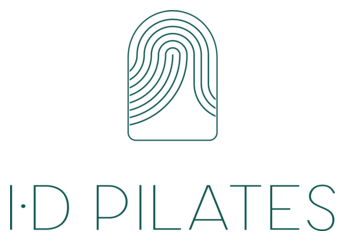Knee folds are a component of the Pilates Fundamentals, which means they are a great tool for teaching beginners important concepts that will help them advance through their Pilates practice. Knee folds also help you find and work your deep core muscles while allowing you to feel how your legs can move while keeping your pelvis and torso completely stable. Additionally, knee folds teach moving without tension and maintaining length through the spine. In order to stabilize your pelvis and minimize tension during knee folds and other Pilates exercises, you must engage all of your powerhouse muscles from the abdominals and glutes to your inner thighs, pelvic floor and hip rotators. This exercise really allows you to engage all of those muscles to do just the right amount of work, teaching efficiency and movement without tension.
How they’re done
Knee folds are a very simple exercise:
• Lay on your back with your legs bent, feet on the mat, feet lined up with the middle of your hip.
• Find a neutral spine position, maintaining the natural curves of your spine.
• Keep the spine stable as you exhale, pull the belly button in to the back, and float one leg into a tabletop position (90 degree angle at the knee).
• Return the leg to starting position and repeat with the other leg.
• Continue alternating legs, exhaling on the lift, inhaling to return.
Why I love ‘em
What I really love about knee folds is that they are great for ALL clients, from first timer to expert. With the right variations, knee folds can be a huge challenge, and for everyone they engage the transversus abdominus muscle, instantly narrowing the waist and increasing your core strength and stability. Creating a deep fold in the hip socket while keeping the pelvis stable is a great core stability challenge and lesson in efficient movement.
Helpful hints:
• Engage your abdominals to bring your leg up.
• Think of your leg floating into tabletop position to keep the work out of the leg.
• Do not let your pelvis tuck as the leg comes up, maintain space between your lower back and the mat.
• BREATHE! Exhale to engage the abdominals and lift, inhale as you lower
Kick it up a notch:
• Try the knee folds while lying on a roller for an extra core stability challenge.
• Add a cervical curl (like a crunch) as you lift your leg.
• Once you find your core and build up strength try lifting two legs at once for a double knee fold.
• Try it while sitting on a physioball!
Be well!


